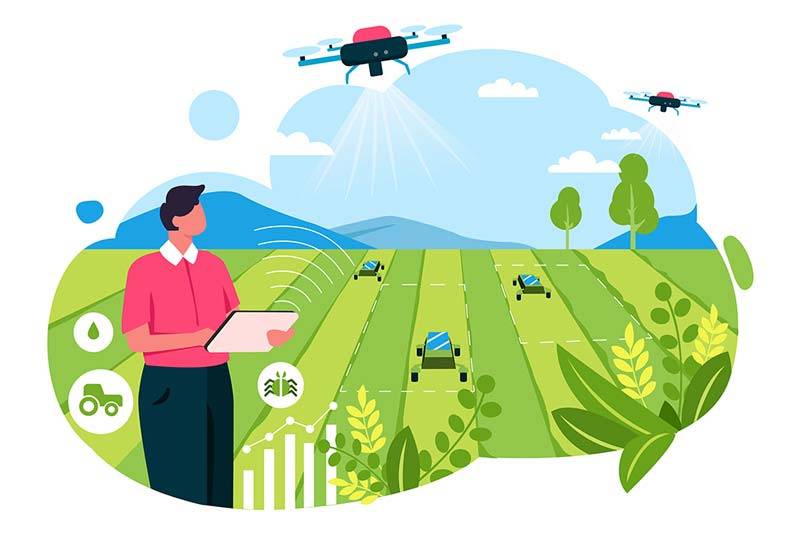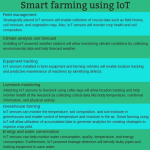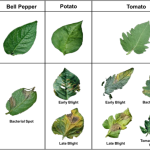Imagine managing your farm from the comfort of your home, with just a few clicks. Remote farm monitoring is transforming the agricultural landscape, offering you unprecedented control and insight.
No longer do you need to be physically present to understand what’s happening on your land. With the right tools, you can monitor crops, livestock, and equipment, enhancing productivity and efficiency. This isn’t just about convenience; it’s about empowering you to make smarter decisions that can boost your yield and reduce your costs.
Curious about how this technology can revolutionize your farming operations? Dive into the full article to discover the benefits and the essential tools you need to get started. Your farm’s future might just be one decision away.

Advantages Of Remote Farm Monitoring
Remote farm monitoring is transforming agriculture with technology. Farmers can oversee their fields from anywhere. This technology offers numerous advantages, improving efficiency and productivity. Let’s explore these benefits.
Efficient Resource Management
Farmers can track water usage and optimize irrigation. This helps conserve water and reduce costs. Sensors monitor soil conditions, ensuring proper nutrient distribution. Efficient resource use leads to healthier crops and higher yields.
Real-time Data Collection
Technology provides instant updates on weather and soil conditions. This helps farmers make informed decisions quickly. Real-time data improves crop management and reduces risks. Access to timely information is crucial for successful farming.
Reduced Labor Costs
Automation minimizes the need for manual labor. Farmers can manage operations with fewer workers. This reduces expenses and enhances profitability. Labor savings make remote monitoring a valuable investment.
Improved Pest And Disease Control
Sensors detect early signs of pest infestations. Farmers can respond promptly, reducing damage. Early detection helps prevent crop diseases. Technology enables proactive management of farm health.
Enhanced Crop Quality
Monitoring ensures crops receive optimal care. Farmers can adjust practices for better growth. Improved conditions lead to higher quality produce. Technology helps maintain standards in agriculture.

Cost-effective Solutions
Remote farm monitoring is transforming agriculture by offering cost-effective solutions that save time and money. As a farmer, you might be wondering how these technologies can actually fit into your budget. The truth is, modern tools are designed not just to enhance productivity but also to be affordable for farms of all sizes. So, what makes remote monitoring a smart financial choice for you?
Affordable Sensors And Devices
Today’s market offers a variety of affordable sensors and devices that enable real-time monitoring of your crops and livestock. You can find weather stations that help predict climate changes, soil moisture sensors to optimize irrigation, and cameras for surveillance—all within a reasonable price range. Investing in these tools can reduce waste and increase yield, making every penny count. Have you considered how much you could save with a small investment?
Data-driven Decision Making
Remote monitoring provides you with valuable data that guides your decision-making. Imagine knowing exactly when to water your crops or feed your animals based on real-time data. This precision eliminates guesswork and prevents unnecessary expenses. By using analytics, you make informed decisions that improve efficiency and cut costs. Wouldn’t it be great to see your farm thriving without overspending?
Reduced Labor Costs
Monitoring tools automate many tasks that traditionally required manual labor. This automation helps reduce labor costs significantly. You can focus on strategic planning while technology handles day-to-day monitoring tasks. Have you noticed how freeing up time can lead to better management of resources and ultimately save money?
Subscription-based Models
Many remote monitoring solutions offer subscription-based models, allowing you to pay monthly fees instead of hefty upfront costs. This model makes advanced technology accessible without breaking the bank. You can start small and scale as your farm grows. Isn’t it reassuring to know you can access top-tier tech without a large initial investment?
Energy Efficiency
Remote monitoring systems often promote energy efficiency, leading to lower utility bills. For example, smart irrigation systems adjust water usage based on weather forecasts, ensuring you use only what’s necessary. Efficient energy use not only saves money but also supports sustainable farming practices. Can you imagine the impact of reducing your farm’s carbon footprint while saving costs?
Remote farm monitoring is more than just a trend; it’s a practical solution that balances technology with affordability. By embracing these tools, you not only enhance your farm’s productivity but also ensure it runs smoothly without excessive spending. Have you explored how these cost-effective solutions could benefit your farm today?
Technologies Enhancing Farm Monitoring
Farming is evolving with the help of technology. Remote monitoring tools are making a big difference. They help farmers make better decisions. With these technologies, farmers can monitor crops and livestock more effectively. Let’s explore some key technologies that are enhancing farm monitoring.
Iot Devices
IoT devices are small sensors placed in fields. They collect data on soil moisture, temperature, and humidity. This data helps farmers understand their crops’ needs. They can water or fertilize at the right time. IoT devices are like the eyes of the farm.
Drones
Drones fly over fields and take pictures. They capture images and videos from above. This helps in spotting problems like pest damage. Drones can cover large areas quickly. They give farmers a clear view of their land from the sky.
Satellite Imagery
Satellites provide images of farms from space. These images help in monitoring crop health. Farmers can see changes in their fields over time. Satellite imagery supports precision farming techniques. It is valuable for managing large farms.
Data Analytics
Data analytics tools process data from various sources. They help in understanding patterns and trends. Farmers use this information to make informed decisions. Data analytics can predict weather changes. This helps in planning better farming activities.
Mobile Applications
Mobile apps are handy for farmers. They provide real-time updates on weather and market prices. Farmers can manage tasks and schedules easily. Mobile apps connect farmers with experts for advice. They are practical tools for everyday farm management.
Future Of Remote Farm Technologies
Remote farm monitoring enhances efficiency, allowing farmers to track crops and livestock from anywhere. Tools like sensors and drones provide real-time data. This aids in better decision-making, saving time and resources. Farmers can monitor weather, soil conditions, and animal health.
These technologies lead to improved productivity and sustainability.
The future of remote farm technologies is rapidly evolving, bringing transformative changes to the agricultural landscape. These advancements promise to make farming more efficient, sustainable, and responsive to environmental challenges. As a farmer or agricultural enthusiast, understanding these technologies can help you stay ahead in this ever-changing field.Automation And Robotics
Automation and robotics are becoming integral to modern farming. Imagine drones that monitor crop health and autonomous tractors that plow fields with precision. These tools reduce labor costs and increase productivity, allowing you to focus on strategic decision-making.Internet Of Things (iot) In Agriculture
IoT devices are revolutionizing farm management. Sensors placed in the soil can provide real-time data on moisture levels, helping you optimize irrigation. This technology not only saves water but also ensures that your crops receive just the right amount of hydration.Data-driven Decision Making
Big data analytics is empowering farmers with insights like never before. By analyzing weather patterns, soil conditions, and crop yields, you can make informed decisions that boost productivity. Have you considered how data could transform your farm operations?Artificial Intelligence And Machine Learning
AI and machine learning are redefining precision agriculture. These technologies can predict pest invasions or disease outbreaks, allowing you to act swiftly. By leveraging AI, you can ensure healthier crops and higher yields.Blockchain For Supply Chain Transparency
Blockchain technology is gaining traction in agriculture for its ability to enhance supply chain transparency. With blockchain, you can trace the journey of your produce from farm to table. This builds trust with consumers who value transparency and sustainability.Sustainable Practices Through Technology
Remote farm technologies are also paving the way for more sustainable practices. By using tools that optimize resource use, you can reduce your farm’s environmental footprint. What steps are you taking to make your farm more eco-friendly? The future of farming is bright and full of potential. By embracing these technologies, you can not only boost your farm’s productivity but also contribute to a more sustainable world.
Conclusion
Remote farm monitoring offers many advantages. It saves time and reduces costs. Farmers can quickly spot issues using smart tools. This technology boosts efficiency and improves crop health. Easy-to-use devices make farm management simpler. Farmers can make better decisions with real-time data.
Remote monitoring supports sustainable farming practices. It helps in conserving resources and protecting the environment. Embracing this technology leads to smarter farming. It secures a more productive and profitable future for farmers. Remote monitoring is the key to modern agriculture success.
Adapt and thrive with these innovative tools.



